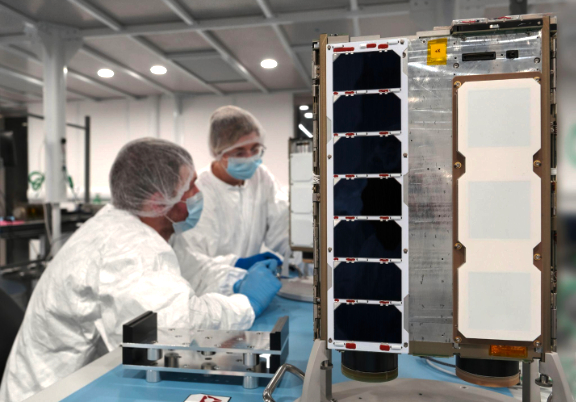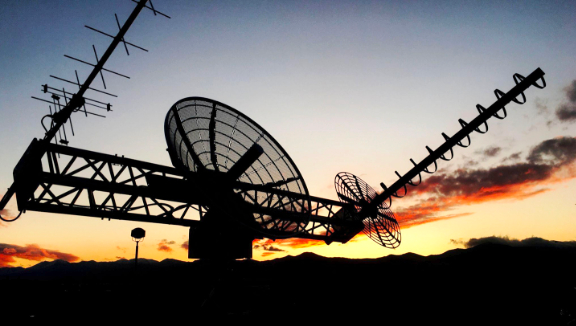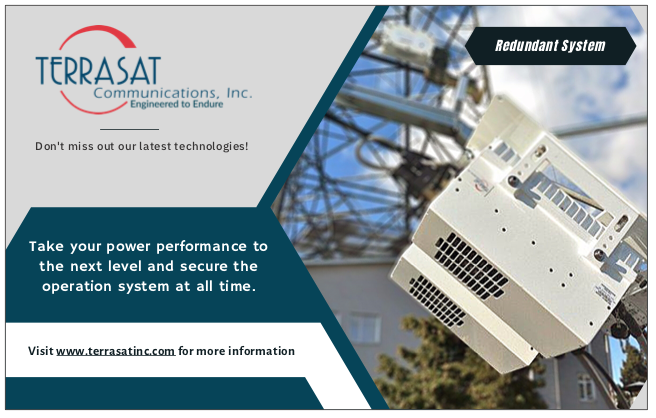Space-as-a-Service (SPaaS) — the next generation of space-based business
For decades, space was out of reach to almost everyone except governments and large companies. Traditionally, any space project would require an upfront CapEx investment of hundreds of millions of dollars and average lead times of seven to ten years before getting into space.

Thankfully, access to space has become easier over the ensuing years. With private players such as SpaceX, launch costs have lowered to as little as $2,720 per kilogram, compared to about $18,500 previously charged for such services. That is a significant drop in the cost of launch; however, it is not as significant as the increase in value per kilogram of satellites.
Technological advances have led to the miniaturization of satellites down to the size of a loaf of bread and has also equipped these smallsats with advanced computing, multifunctional capabilities that can be constantly upgraded and flown in fleets. Today, for the same investment amount, a company or an individual can now deploy a larger fleet of satellites with better data collection capabilities, more timely insights and applications that before weren’t even possible.
This exponential development in hardware and software technologies, along with lower launch costs, heralded the start of the New Space era, which is enabling more organizations than ever — from academia to technology startups — to leverage space and create new business models.
Yet, despite the number of new space players entering the market and providing a wider pool of suppliers, the complex economics of satellite constellation remains one of the main barriers to building a successful business in space. Satellite constellations require a substantial upfront investment and are operationally complex.
A space startup has the dual challenge of having the correct mix of operational automation and integration for managing a fleet of satellites, as well as the correct investment strategy to scale their business at the appropriate pace. The complexity of fleet operation is not yet fully understood by the market, which currently has less than a handful of successful constellations in operation.
Also, undergoing the journey of raising money for building a single demonstrator is difficult, but possible; however, as soon as the business has proven the concept and gears into the next phase of constellation deployment, managing the substantial fundraising needs on time with the operational constraints of scaling the business is an almost impossible challenge.
Pioneering the Space-as-a-Service model
The Space-as-a-Service (SPaaS) subscription model, such as the one offered by Spire, has been developed with the vision to make space more commercially accessible and less risky. The company owns and operates one of the world’s largest constellation of Low Earth Orbit (LEO) satellites that use software defined radios (SDRs) for collecting various types of data points like weather forecast data, AIS data, ADS-B data, RO data, and GNSS reflectometry data.
With more than 100+ satellites in orbit, 30+ ground stations around the world that operate 24/7 as well as mission control teams, Spire has built a proven space infrastructure that is seamlessly integrated and can be leveraged by any company for fast, scalable access to space-based applications through a subscription model. Spire handles the end-to-end management, from manufacturing to launch to satellite operations, taking the space out of being a space company and enabling customers to focus on running their businesses.
A constellation of 100+ multi-payload satellites
Top 5 Advantages of Space as a Service (SPaaS)
SPaaS provides an alternative business model to standard satellite missions where companies have to design or buy satellites, contract launchers, build antennas around the world, and develop the software infrastructure to operate at scale. Instead with SPaaS, companies leverage an existing infrastructure, already at scale, and just pay for what they use.

Spire offers full vertical integration: in-house engineering,
manufacturing and testing at its facilities in Glasgow, Scotland.
As a comprehensive SPaaS provider, Spire uses its proven satellite platform, contracts launch providers, manages mission operations, and hosts data collected on a remote cloud network that can be accessed via a simple API — and these services can be scaled up or down with a pay-as-you-go model.
This is analogous to the offering of Amazon Web Services (AWS) as a business; traditionally, companies with large data storage needs would have to physically build and maintain storage space. Building or buying too little storage could be disastrous if the business took off and expensive if it didn’t. This dynamic applies to space businesses as well. Companies that want to scale their business would traditionally have to expand their satellite manufacturing facilities, invest in supply chains, build ground stations all around the world, develop operation software from scratch to make that system work together, and maintain each aspect.
With SPaaS, companies can use Spire’s existing and future capabilities for a customized period of time and pay only for the services that they are using. Here are the top five advantages of the SPaaS model:
1. Reduced time to market
If you are looking to deploy an application in space, Spire’s software in space offering helps you launch an application at constellation scale without having to launch a satellite. Not to mention, the time it takes to gain use of the application and data collection is a fraction of the time that would be spent on building the infrastructure.
If a space-based application requires unique characteristics, such as proprietary sensors, Spire space and ground infrastructure can be leveraged for a monthly subscription cost, rather than paying an upfront CapEx for building each phase of a space mission. With access to the Spire infrastructure, the journey to space can be “fast tracked,” leveraging a supply chain that is vertically integrated across manufacturing, launch with partners, mission operations, ground segments network and cloud infrastructure for data collection.
With a player that is vertically integrated across the supply chain, protection is in place from the onus of solving problems, such as manufacturing or launch delays. For companies working with a variety of providers, a delay from one has a domino effect on the next in sequence. Spire is in the position to reorganize resources and timelines to meet mission-critical deadlines. As you scale from a precursor to minimum viable constellation, Spire offers 24/7 support and expertise in serial manufacturing, flexible and robust launch schedule, a specialized team of engineers, and operations for mission control.
2. Lower (and predictable) costs
SPaaS provides beneficial cost savings, as this entire infrastructure is “shared” among all the users. Due to the size of Spire’s production and operations, the infrastructure lends the advantage of economies of scale to all Space Services customers, leading to lower costs for hardware and software compared to the traditional model.

Spire offers full vertical integration: in-house engineering, manufacturing and testing at its facilities in Glasgow, Scotland.
For example, as Spire owns and operates a constellation of 100+, multi- payload satellites, the company has the ability to pass on the cost benefit of this infrastructure to its customers by offering a serial manufacturing production unit, in-house satellite building environment, owned ground segment network, proprietary software for building systems integration and automation, and mission control center for satellite operations and data downlink.
Customers can leverage any improvements that Spire makes to its serial manufacturing capabilities and mission operations as an advantage to their contracted services, while benefiting from economies of scale. Moreover, SPaaS helps companies better forecast their costs, and comes with a Service Level Agreement (SLA) that ties payments to the achievement of the predetermined performance level, such as meeting the launch timeline or the latency between the collection of space-based data and its provision to the customer.
For any new space company raising money from investors, reducing upfront CapEx while making OpEx more predictable as the business grows is a major key to success that SPaaS offers.
3. Scalability and integration
The SPaaS model is set up with the core purpose of scaling constellations. Building a single satellite requires operational interactions with four systems: design, launch vehicle, mission operations and the ground segment. However, as you begin to scale a full constellation, the operational complexity is magnified.
The SPaaS model is designed to scale the entire process of manufacturing and deploying in space to build an entire constellation at a fraction of the time it would traditionally take. Alternatively, without the SPaaS model, it is difficult to determine whether partners across each stage of the mission are all ready to scale with your constellation. Bear in mind, if any part of this moving puzzle is not ready for scale, the entire mission will feel the domino effect of integration failure.
Spire’s proven experience in operating at constellation scale puts it in the unique position of offering ‘reliability’ as a metric for building and operating customers’ constellations. The reason many organizations choose to partner with Spire comes down to its proven flight heritage in payload design, mass manufacturing, launch planning and data processing capabilities. Spire offers a one-stop-shop to take ideas to orbit, with systems that talk to each other and ownership of operations from start to finish.
4. Access to the latest innovations
In a traditional business model, a company must invest capital and resources in new hardware or software development. With SPaaS, customers have access to any improvements or upgrades made by the provider. Spire Space Services customers benefit from any upgrades or technological advancements of satellites, manufacturing, launch partnerships, new mission operations features, or the ground station network at no additional cost. Spire is in the position to deliver the most advanced version of the constellation to its customers year after year.
5. Reliability and lower risk
The Spire Space Services offering comes with 350+ years of proven flight heritage and experience launching 150+ satellites across 32 launch campaigns and managing a constellation of 100+ satellites. This experience naturally extends to all Space Services customers in manufacturing heritage, operational excellence and reliability.
Spire is invested in making constellations work for its own data offerings and, therefore, is in the unique position of offering this instrinsic trust to all future constellation customers. Spire also offers access to Earth-based satellite replica that acts as a sandbox to simulate space on Earth and test applications before launching in space.
Spire’s credibility in building a demanding and 99.99% reliable data infrastructure is showcased by services offered to organizations like NOAA and NASA that recognize the quality of Spire’s data and choose to augment their data infrastructure with it. With this rock solid foundation, Spire is the perfect partner for launching a business in a dependable and secure manner.
Why Spire Space Services?

The information gained about Earth from space is critical in building a better future — and now Spire is doing for space what cloud computing accomplished for the web; offering a reliable infrastructure on which companies can quickly deploy and scale applications.
With lower costs and risks, the SPaaS model is fostering an ecosystem where scaling a business in space is as easy as integrating an API.
https://spire.com

Joel Spark
Joel Spark is a Spire co-founder and the VP Engineering of our Space Services business, which allows organizations to quickly deploy payloads and applications to space using Spire’s LEMUR satellite platform and operate them using Spire’s ground station network and web APIs. Joel holds a Masters of Space Management from the International Space University, and a Bachelor of Aerospace Engineering from Carleton University with and a Bachelor of Aerospace Engineering from Carleton U a specialization in structures, systems and vehicle design.


